Nanay’s Kitchen is Singapore’s only home-style halal eatery serving Filipino dishes
- Husband-and-wife duo Saifuddin and Hidayah are the founders of Nanay’s Kitchen — Singapore’s only home-style halal eatery serving authentic Filipino food.
- What started as home-cooked meals to satisfy a craving soon grew into a cosy community space, with the occasional karaoke nights and boodle fight.
- We speak to the couple about bridging cultures, learning to cook from their mothers, and what’s next for Nanay’s Kitchen.
In a quiet corner of Ubi, Nanay’s Kitchen may not shout for attention. But step inside, and you’ll find it quietly pulsing with warmth.
As Singapore’s only halal-certified eatery serving home-style Filipino food, it fills a rare and meaningful gap in the market.
Filipino cuisine is often perceived as pork-heavy, leaving Muslim diners with limited access to its flavours. But Nanay’s Kitchen bridges that divide — not just with good food, but with a space built on love, community, and a deeply felt cultural exchange.
“We cook with love,” the owners, Saifuddin and Hidayah, say, and that care is woven into every bite.
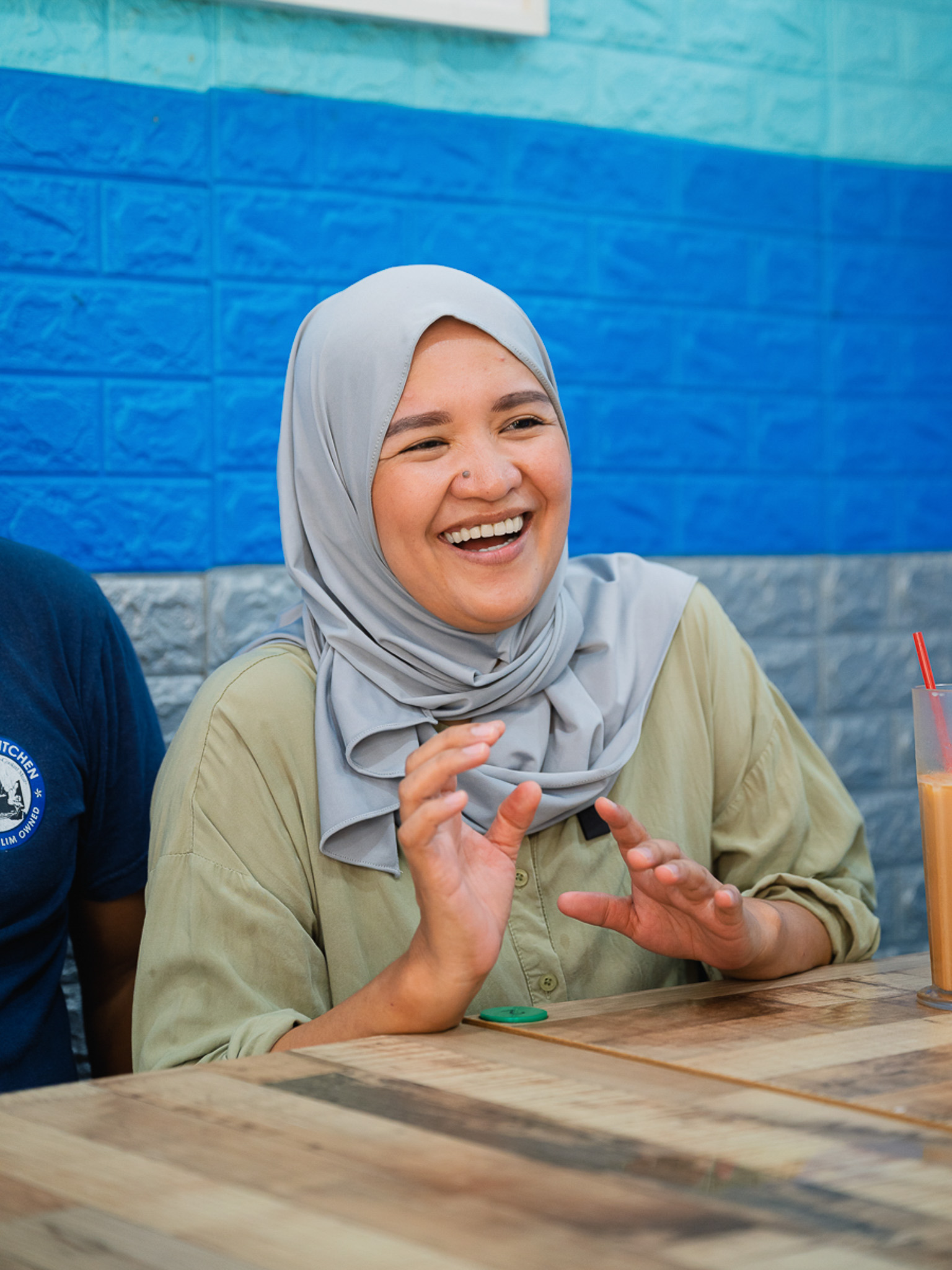
What began as home-cooked meals soon grew beyond their kitchen. Their Muslim friends, many of whom had never tried Filipino food, became curious, and their Filipino friends, in turn became more open to exploring Malay cuisine.
“We thought: ‘Why not share it with more people?’” Hidayah recalls.
They started with weekend orders, but the demand surged.
Eventually, in 2021, they opened Nanay’s Kitchen: A space where two cultures could meet at the table.
A tribute to a mother’s cooking
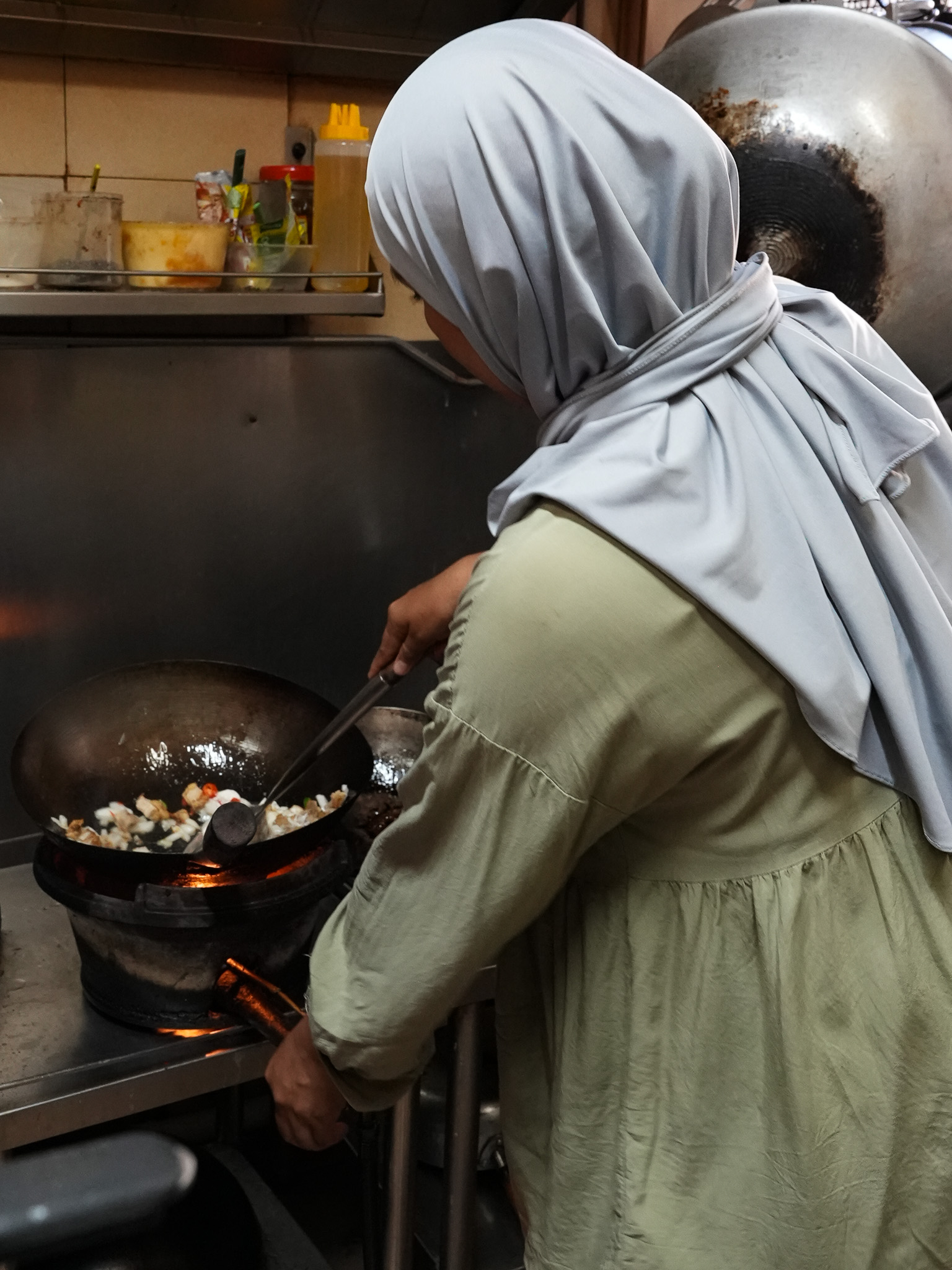
When asked how the name Nanay’s Kitchen came about, Hidayah immediately credited her husband.
“Nanay”, in Tagalog, is a rather endearing term for “mother”. It suggests care, home, warmth — and everything they hoped to bring into their space.
It was also a tribute to the women in their lives. Hidayah had learned to cook Filipino dishes from her mother, and later picked up Malay recipes from her mother-in-law.
The name stuck — and eventually, so did everything it represented: The quiet comfort of a mother’s cooking, and the ways that love and food travel across cultures.
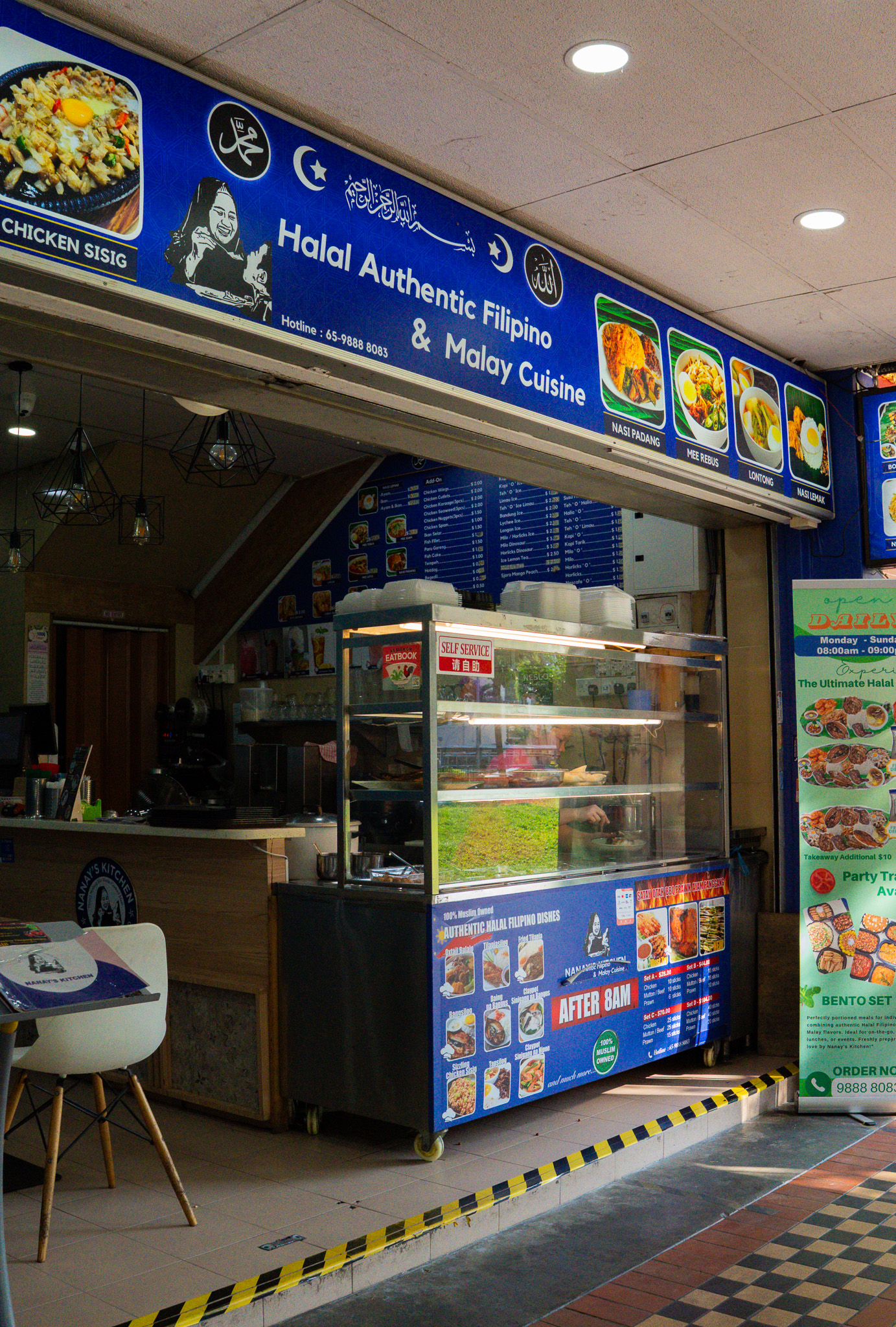
Nanay’s Kitchen now has three outlets. It started in Ubi about three and a half years ago, expanded to Outram Community Hospital, and most recently landed in Yishun — a response to repeated requests from loyal customers in the north.
Still, expansion is never rushed. Each new outlet goes through months of quality checks to ensure consistency across the board.
“We don’t want one outlet to be better than another,” Saifuddin tells me. It’s the kind of thoughtful care you’d expect from a home-cooked meal, and is evident in the way they treat their food, customers, and their space.
A space that feels necessary
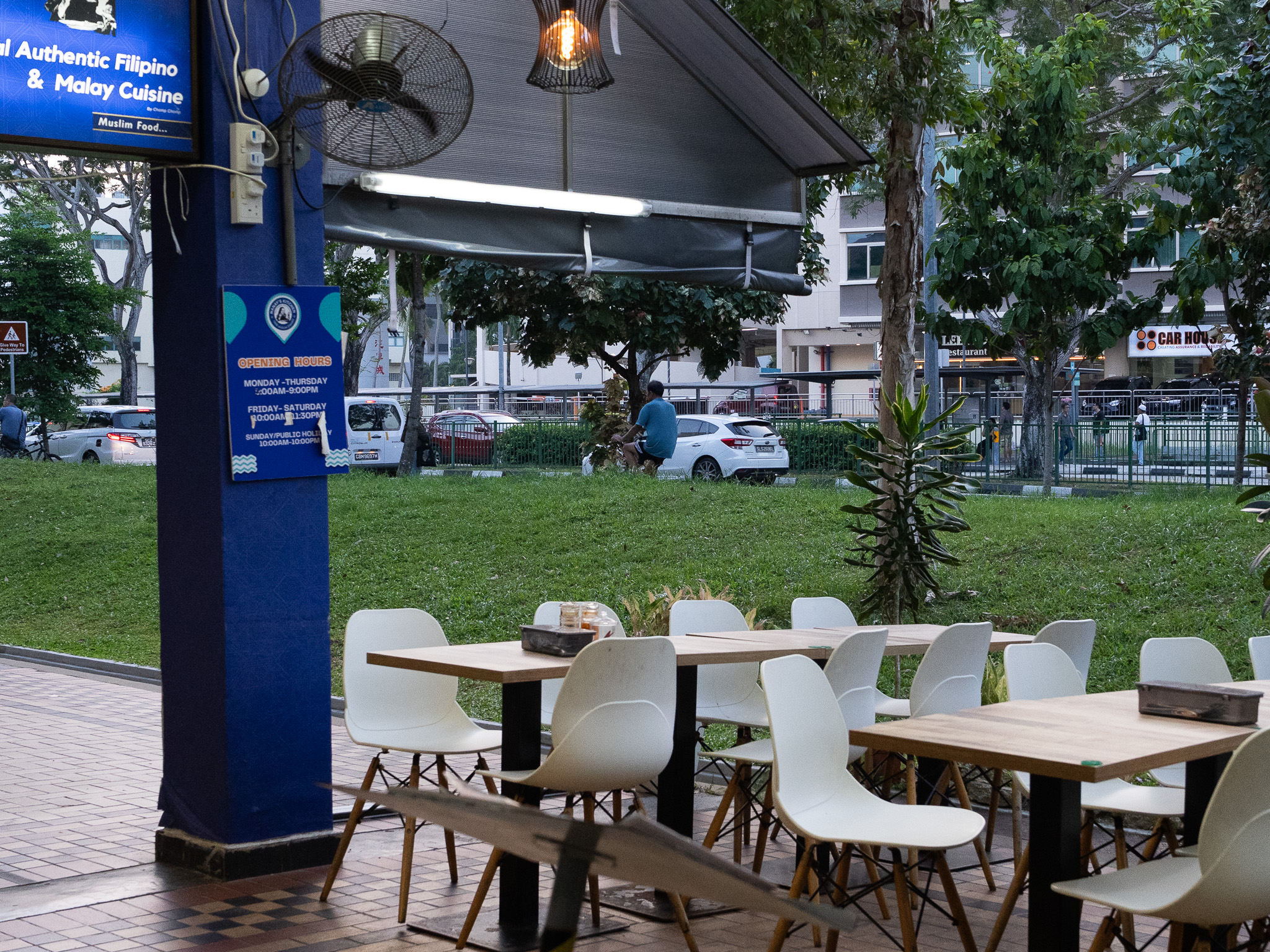
Despite having travelled regularly to the Philippines for a decade, Saifuddin admitted he rarely eats Filipino food, while there — largely because halal options are hard to come by.
And for many of their Malay customers, that challenge still exists.
The couple points out that even among Malay-Filipino couples, there are many who have never tasted Filipino cuisine — and that alone says something.
There’s a cultural gap, where a bridge has not quite been built.
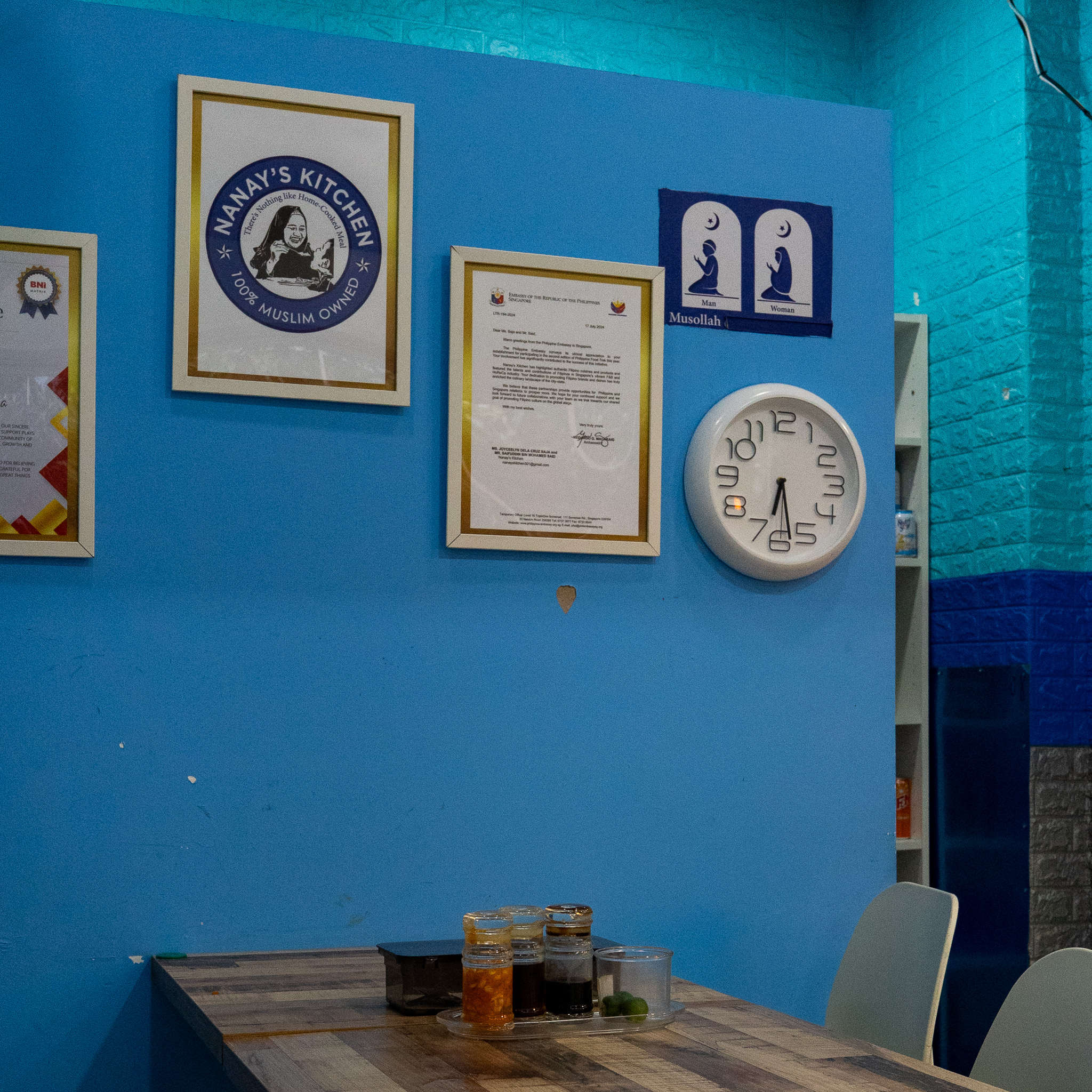
Nanay’s Kitchen feels like it’s trying to narrow that divide, slowly.
It opens the door for Filipino diners to try something new. Meanwhile for Malay diners, the unfamiliar becomes familiar in small, but meaningful ways.
Still, as Saifuddin jokes: “Malay just need chilli.”
He’s not wrong — with the right sambal, even new flavours start to feel like home.
Alongside classic Filipino dishes, you’ll find condiments familiar to Mamak tables, such as sambal belacan and sambal kicap — small additions that reflect a bigger spirit of welcome and exchange.
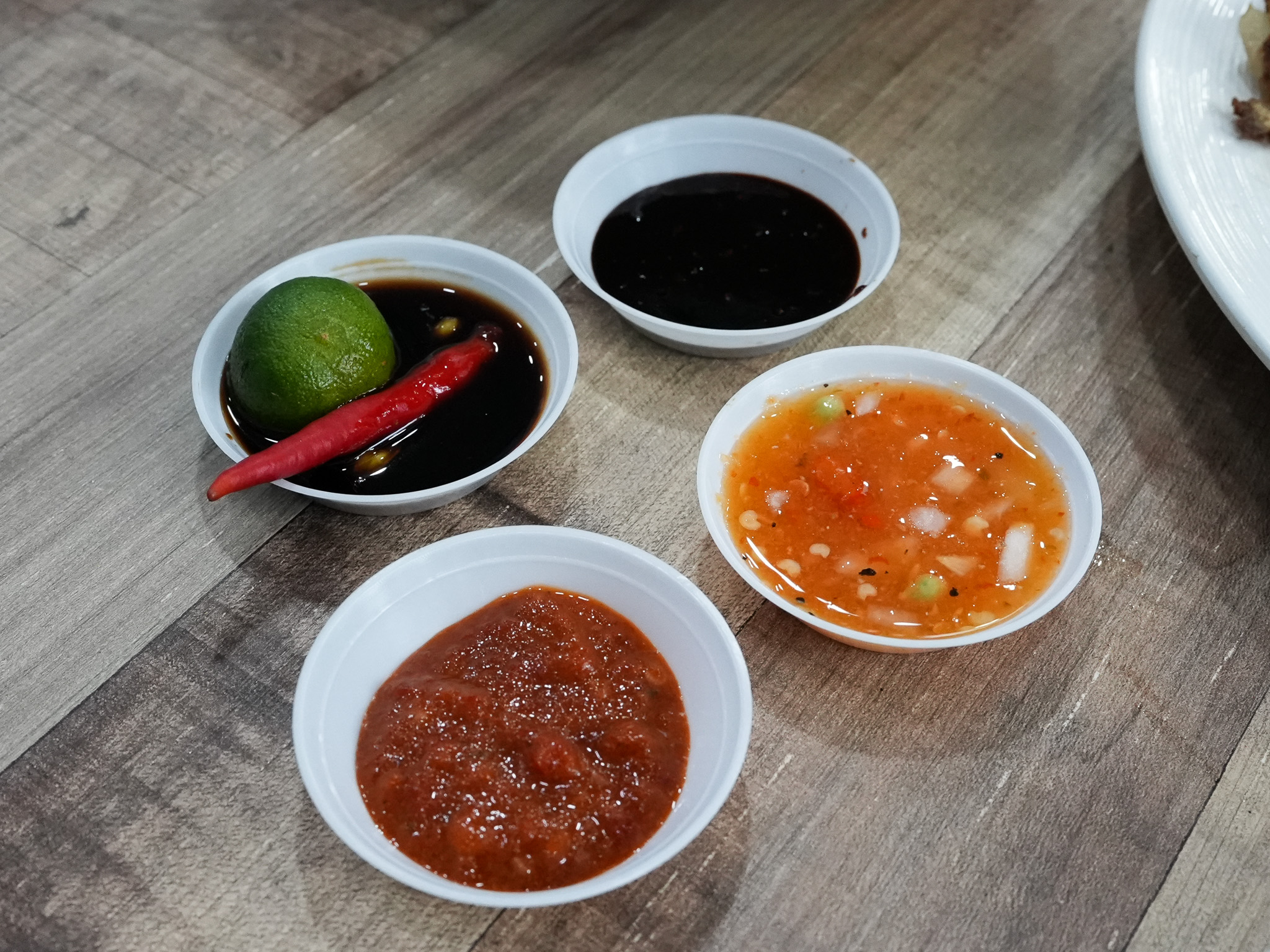
On certain evenings, the space truly comes alive.
Nanay’s Kitchen hosts karaoke nights, and occasionally, boodle fights — a traditional Filipino communal feast served on banana leaves and eaten by hand.
It’s lively, a little chaotic, and full of joy. If you’ve ever been to a Filipino gathering, you’ll know the energy. Its openness to be together is what really gives the place its heart.
Even the Philippine Embassy has taken notice. Nanay’s Kitchen has hosted diplomats — including ambassadors from Brunei and Indonesia — to introduce them to halal Filipino cuisine.
“And they like it!” Hidayah adds, grinning.
Staying authentic, while tuning to taste
For all its cultural pride, Nanay’s Kitchen is also attuned to the Singaporean palate.
Hidayah tweaks recipes based on feedback — adjusting sweetness, sourness, and salt levels to suit local tastes, which tend to be a bit milder. Customers are encouraged to share their thoughts, and the team takes it seriously.
“We never stop learning,” they say. And it seems this humility has helped them grow.
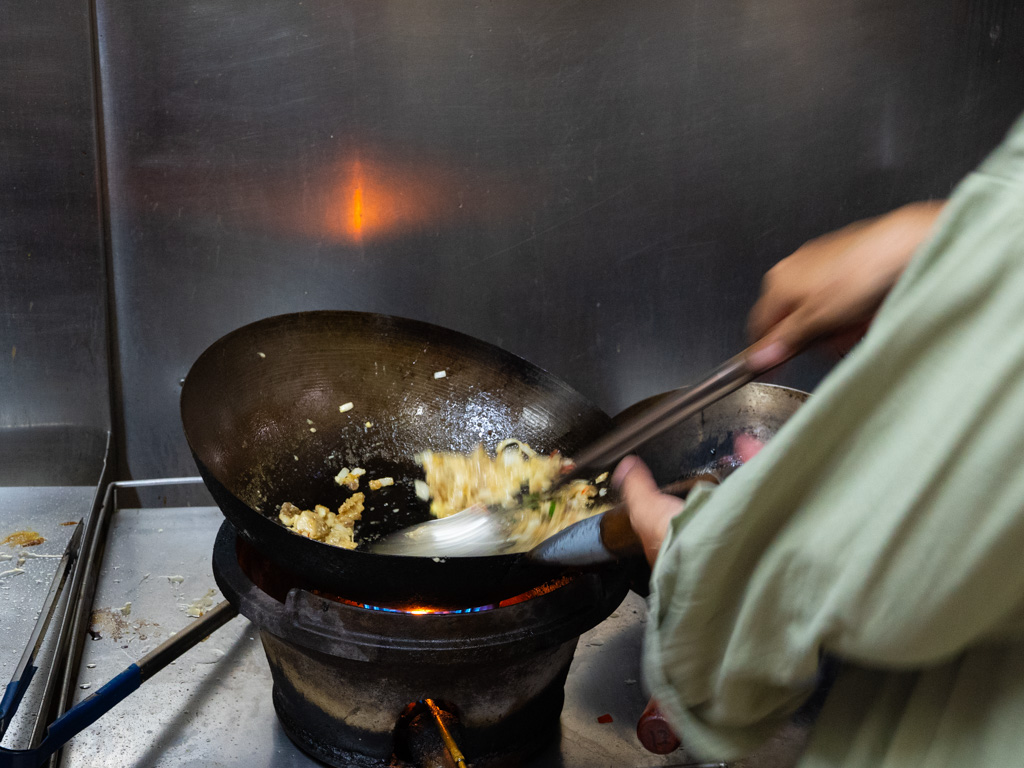
Making the food halal, it turns out, wasn’t all that difficult.
“Malay and Filipino food already have similarities,” Hidayah explains.
“Plus, Filipino dishes aren’t just all pork — there’s fish, prawns, vegetables…it’s easy to adapt,” she adds, with a smile.
What really stood out is their commitment to keeping things authentic. They import key halal-certified ingredients directly from the Philippines — including Filipino soy sauce, which has a saltier profile than its Malay counterpart.
It is these small, deliberate decisions that hold the soul of the cuisine together, even as it adapts to new homes and new mouths.
Hearty, homely dishes
At Nanay’s Kitchen, the dishes are hearty, homely, and deeply comforting — Filipino fare lovingly prepared and made halal without losing its authenticity.
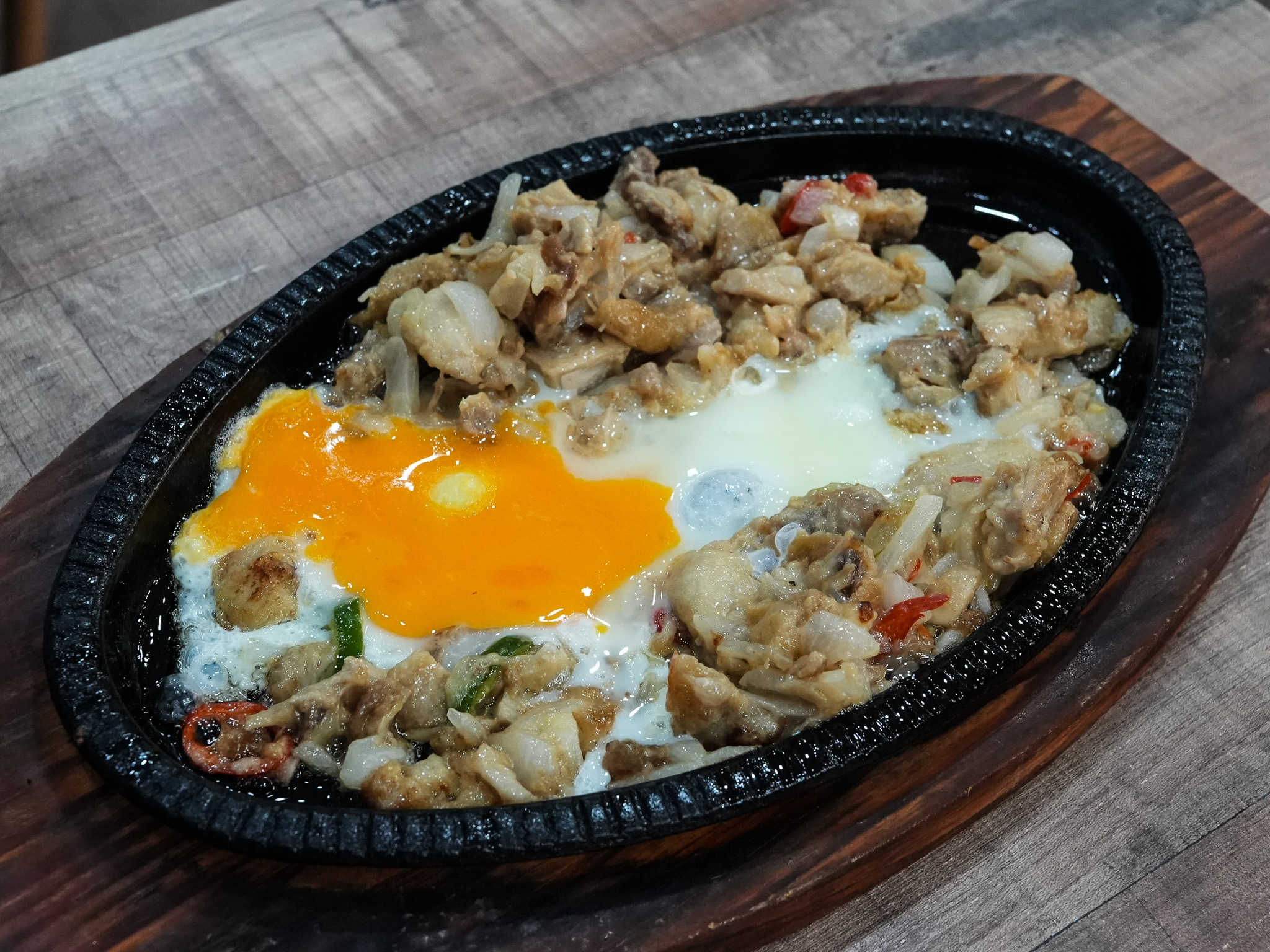
I was most excited to try the chicken sisig (S$11), which comes sizzling on a cast-iron hotplate.
Finely chopped grilled chicken is tossed with mayonnaise, onions, green chilli, and citrus — a medley that’s creamy, spicy, tangy, and smoky, all at once.
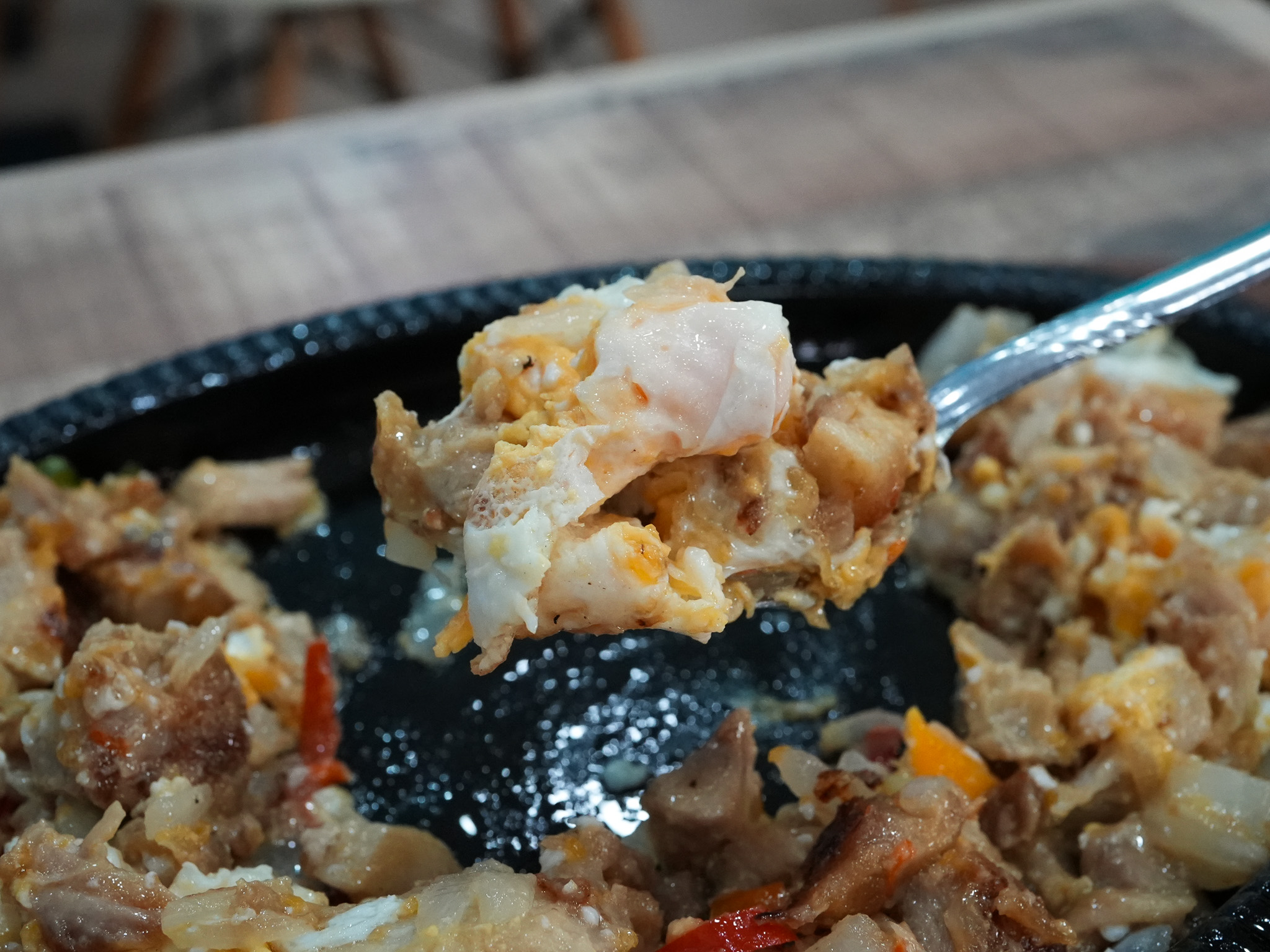
It is crowned with a runny egg — break it, stir it through, and you’re transported straight to the Philippines in a bite that’s rich, comforting, and deeply familiar.
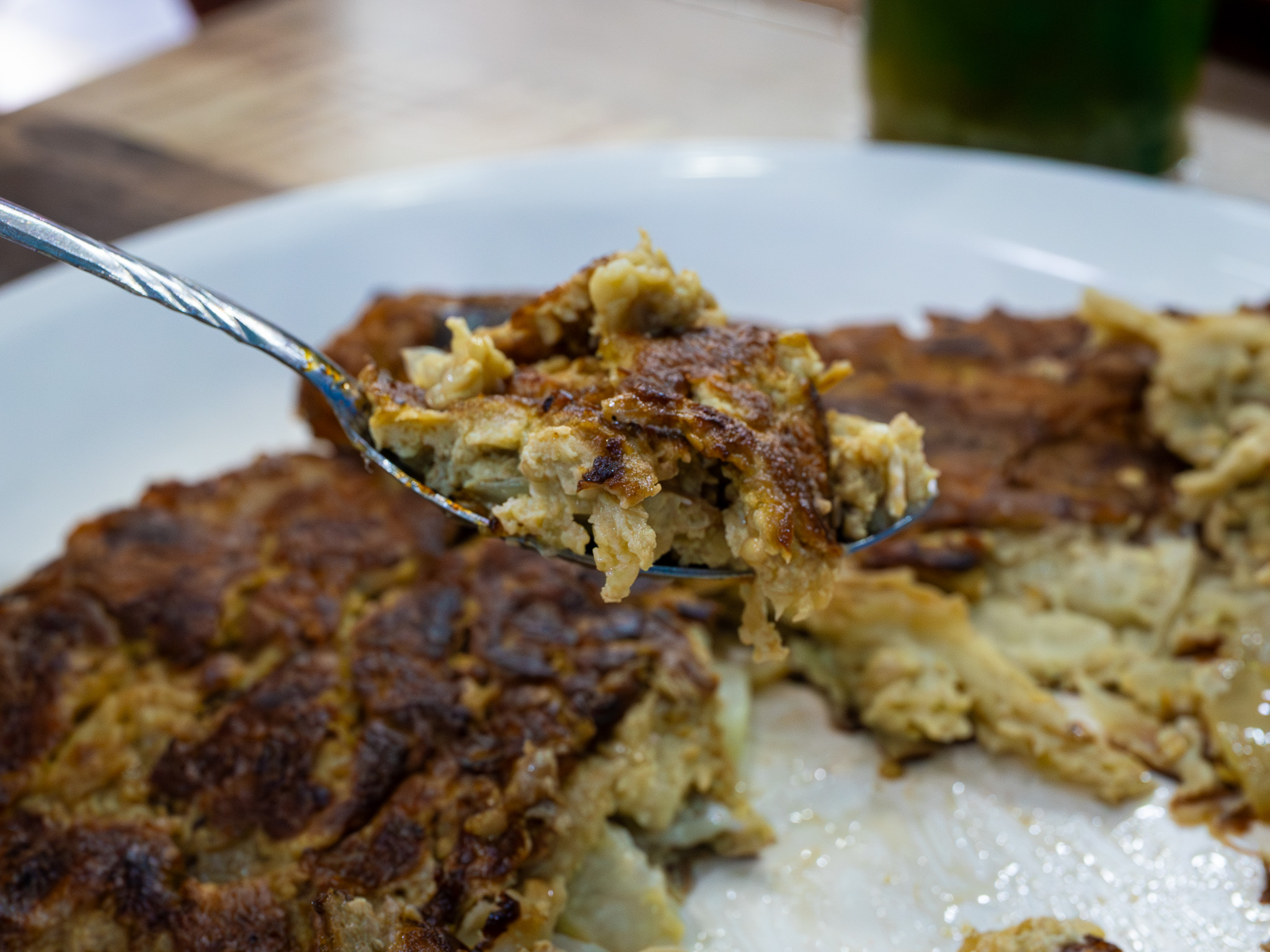
Next, there is the tortang talong (S$7.50), a grilled eggplant omelette and staple in many Filipino households.
The eggplant is charred until smoky and tender, then flattened and dipped in beaten egg before being pan-fried to a crisp golden edge. The result is a soft and subtly sweet inside, with an earthy flavour — all with lightly crisped edges.
While it is unassuming, it is deeply flavourful (especially when paired with sambal!).
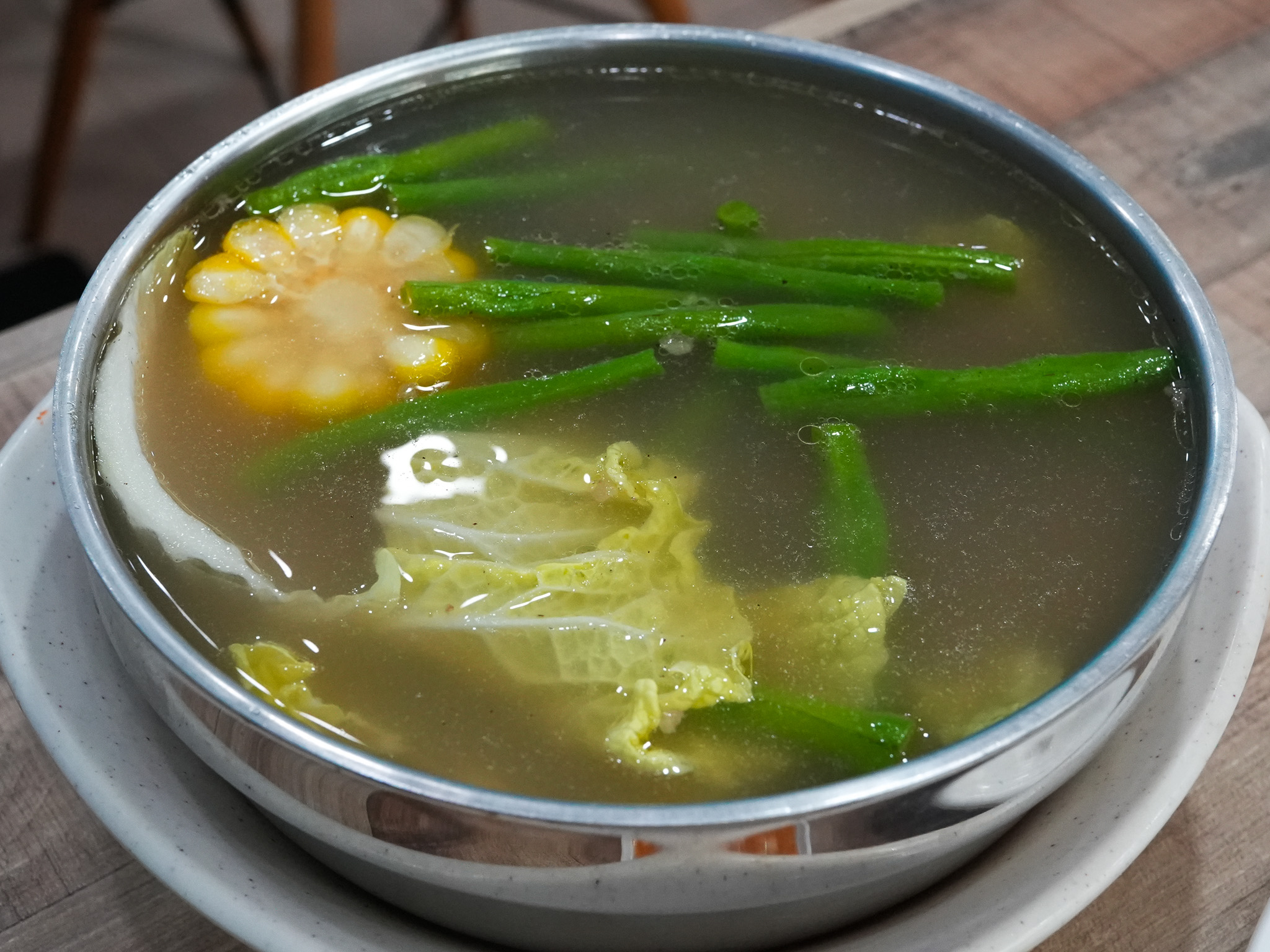
For something a little heartier, the oxtail bulalo (S$12) delivers depth and warmth.
This traditional beef soup is light in appearance, but full-bodied in flavour, thanks to hours of slow simmering.
The broth is lightly sweet from the corn, but rich with marrow, layered with cabbage, vegetables, and fall-off-the-bone oxtail.
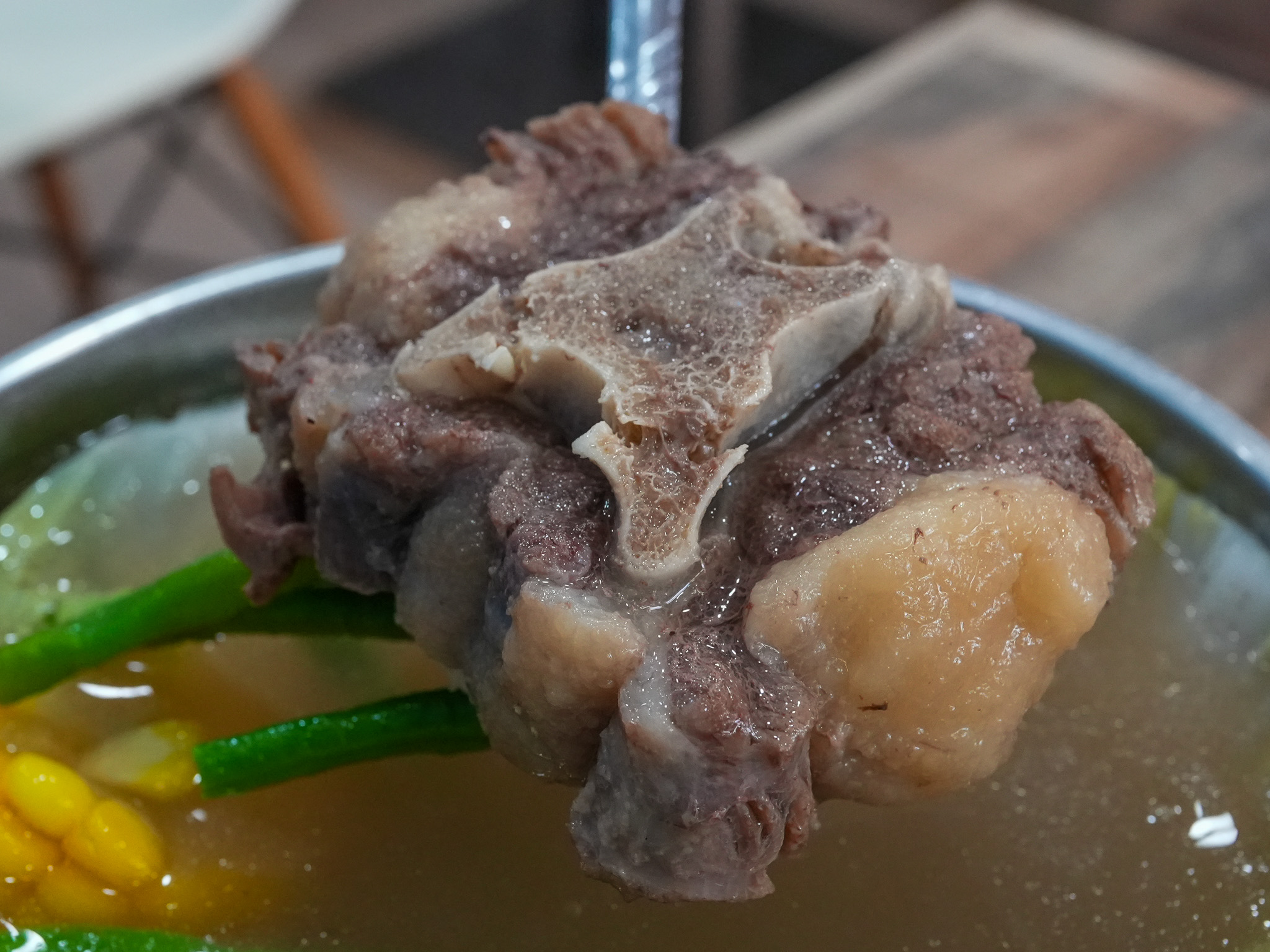
Have it with some rice. It is soothing, restorative, and lingers in its comfort.
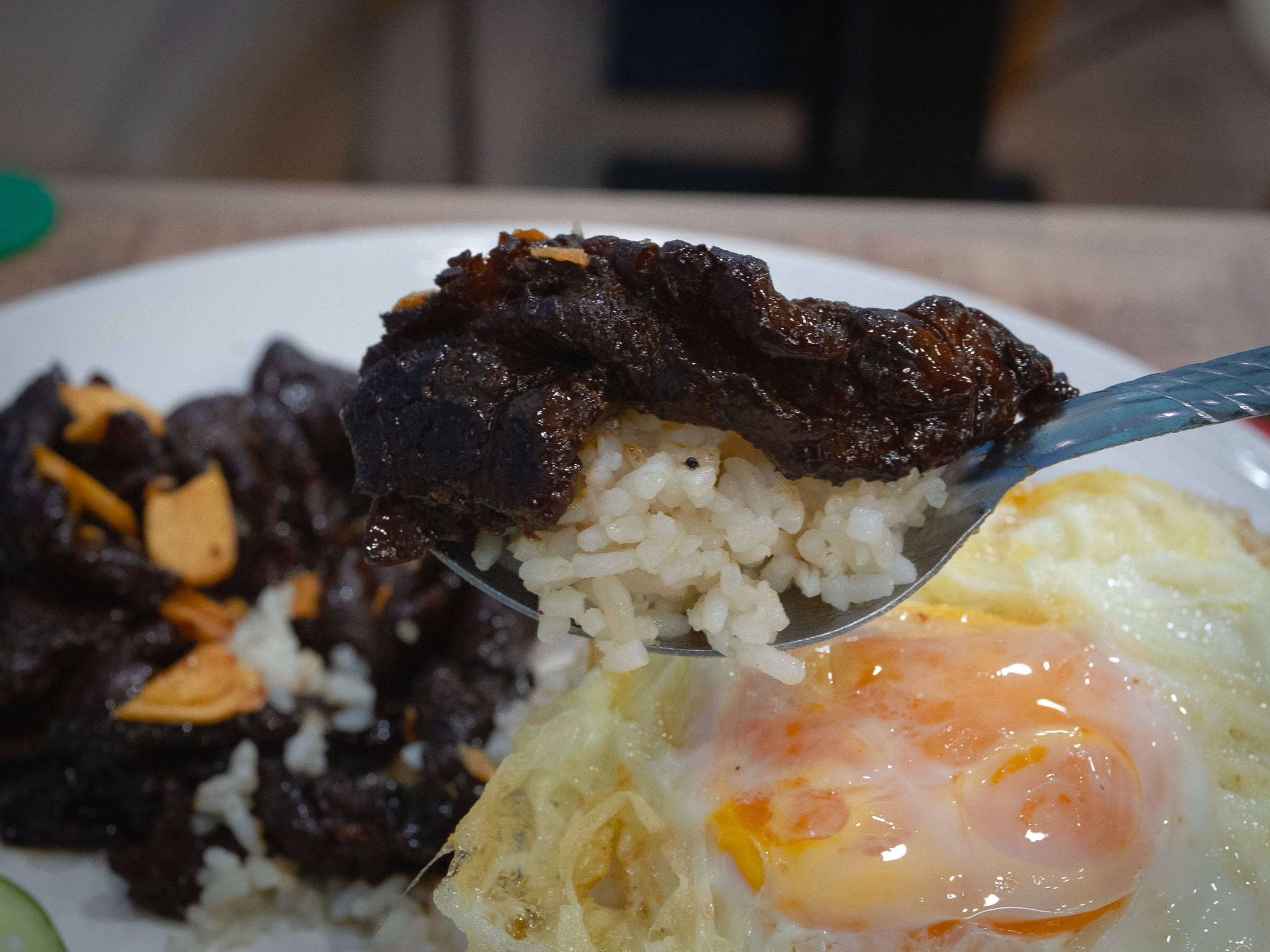
No introduction to Filipino food would be complete without tapsilog (S$10) — the holy trinity of tapa (marinated beef), sinangag (garlic fried rice), and itlog (fried egg).
Nanay’s version balances savoury-sweet notes in the beef, with a lovely caramelised edge. It perfectly complements the aromatic, garlicky rice.
Break into the egg and let the yolk coat the rice. It’s everything you want in a comforting, one-plate meal. Think of it as the Filipino cousin to a nasi lemak breakfast, with its own distinct rhythm.
You’ll also find other silog variations:
- Tilapiasilog (S$10.50), with a golden, crispy fried tilapia.
- Cornsilog (S$10), featuring savoury, tender corned beef.
We didn’t get to sample its full range of Filipino street snacks this time around, but we’ve heard good things about the crispy chicken skin (S$6), the chicken lumpia (S$8), a kind of spring roll, and turon (S$6), a hot caramelised banana fritter that’s sweet and crackly.
If you’re dining in a group, the boodle fight (from S$48) brings the feast to the table — banana leaves piled with everything from grilled chicken to smoked milkfish, designed for everyone to eat.
Nanay’s version is well-curated, often featuring grilled meats, seafood, bee hoon, rice, fresh vegetables, and dipping sauces. Sets for two to ten diners (from S$48) are available, and the energy is festive — celebrating the joy of eating together.
Cold, milky desserts
Filipino desserts are made for this climate — cold, sweet and milky.

We started with the mais con’ yelo (S$4.50) — a layered dessert of shaved ice, sweet corn, and evaporated milk.
It is light and milky, with a contrast between soft corn kernels, icy shards, and smooth creaminess. While it is simple, it is incredibly addictive for how refreshing it is
For something a little richer, try the banana con yelo (S$4). This version swaps out the corn for syrupy caramelised bananas, which are softer, sweeter, and a touch more decadent.
When paired with the cold milk and ice, it is like sunshine in dessert form — perfect for a hot afternoon.

If you’re new to Filipino sweets, the halo-halo (S$5) is a must. It means “mix-mix” in Tagalog — and that’s exactly what you’re meant to do.
It’s a riot of textures and colours — shaved ice, sweetened beans, jellies, and ube ice cream packed into one vibrant glass. Every spoonful brings a different combo of creamy, chewy, crunchy, and icy.
One may think of it as the Filipino take on ice kachang, but with its own twist. It is chaotic in the best way — refreshing and nostalgic.
The road ahead
The husband-and-wife duo are exploring new offerings such as catering, bento boxes, and party trays — perfect for those looking to bring a taste of home to gatherings, big or small.
Naturally, that kind of growth comes with its own challenges. To keep up with demand while maintaining quality, they’re open to partnerships that can help ease the operational load.
As for what lies beyond Singapore? A regional expansion remains a dream — one they speak of with quiet hope. “Insyaallah,” they say.
If all goes well, more people around the world might one day get a taste of halal Filipino cooking the way Nanay’s Kitchen does it.
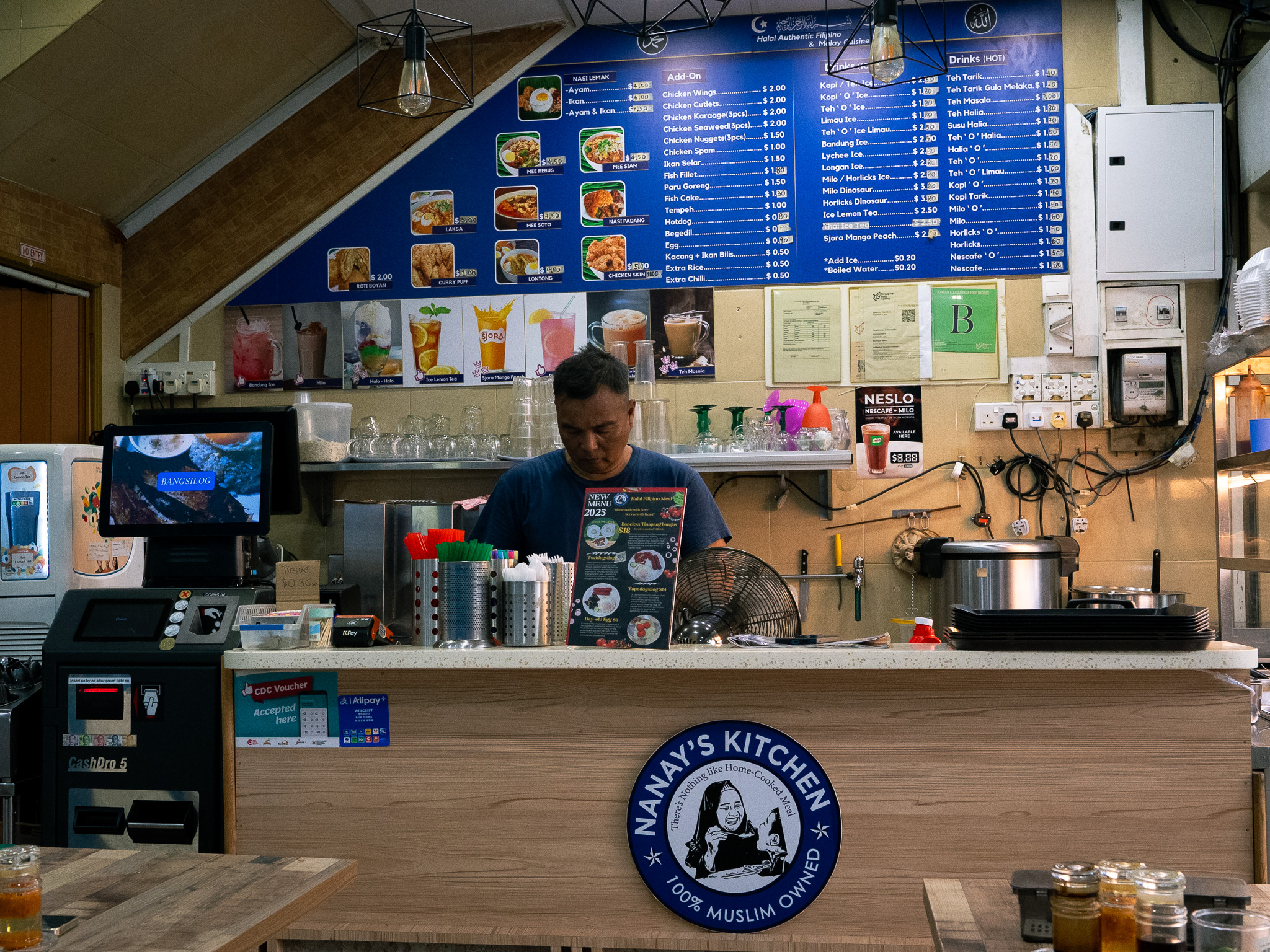
Nanay’s Kitchen may have begun in a quiet corner of Ubi, but its story and its spirit is anything but small.
With each sizzling sisig and steaming bowl of bulalo, it is rewriting what Filipino food can look like in Singapore: Heartfelt and deeply rooted in community.
Here, food is shared, laughed over, and lingered around. And in that simple, generous act of feeding others, Nanay’s Kitchen reminded me what it means to feel at home.
For the latest food news, read our stories on what to get at this year’s Sentosa Grillfest and the new Middle Eastern fast-food spot, Wewa.




